
Cover Story: Lucky Number Seven
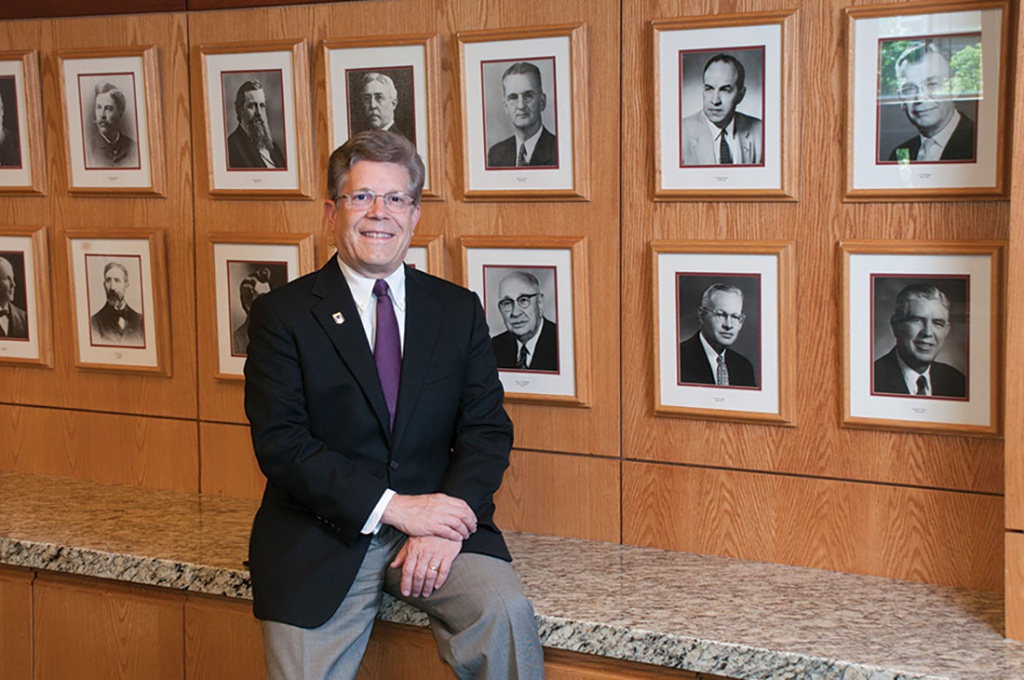
After serving six presidents in four decades, Steve Morgan steps into the role of president
by Audrey Maynard (’03) portraits by Christy Cunningham
Few people these days can say they’ve spent 35 years working for one organization. Steve Morgan’s ascent from inexperienced business manager to college president is an unlikely story, but it tells the tale of a humble man who’s not averse to taking risks, a person who has seized the opportunities that have come his way. It is also the story of a man who has embraced the lessons of the six presidents who came before him and of his plans to use those lessons to lead Westminster into its next chapter.
Steve Morgan coyly smiles when he admits that he has never formally applied for any position at Westminster—including president. In 1981, as a 27-year-old CPA with Coopers & Lybrand, Steve worked as an auditor at Westminster during the most financially grim period in the college’s history. When the college’s business manager resigned unexpectedly, professor Alan Rogers suggested they consider Steve for the position. Steve was contacted by the chief operating officer, a retired Army colonel named Bill Clark, to see if he’d interview for the position with the chairman of the board.
“[Bill] asked me, ‘How old are you?’ When I told him I was 27, he said, ‘Don’t tell anybody that. Nobody has any credibility until they’re at least 30 years old,’” Steve laughs.
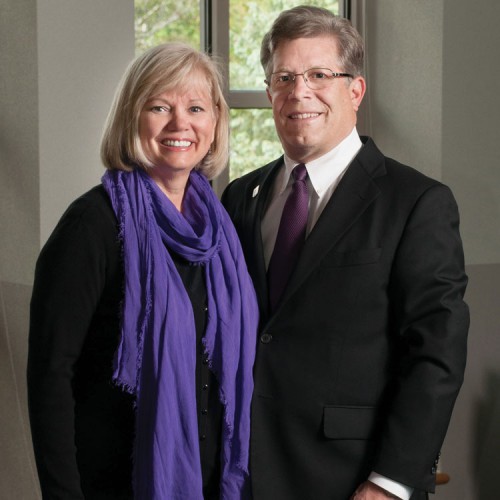
The inexperience of youth aside, Steve did pursue the job and recalls a rough interview with chairman Jack Ward, who grilled Steve about his lack of management experience. “I remember going home that night telling Sandy that there was no way I was getting that job. I was really surprised the president called me later and offered me the job,” he says.
Making the move wasn’t without some serious trepidation on Steve’s part, however. His boss at Coopers & Lybrand, Dick Goode, promised to keep Steve’s position at the firm available for six months in case the college failed, as many expected it would. He even loaned Steve two employees to help with the transition. “He said, ‘Steve, the college could really use you, so I’ll hold your job while you go out there,’” Steve says. “I can assure you, if he hadn’t done that, I wouldn’t have taken the job. I had a wife and a baby—the risks were just too high.”
Sandy Morgan (’11), Steve’s wife, remembers being supportive of his decision but that the early years were rocky. “The first summer he was there he said, ‘I think we’ll get a paycheck this month,’ and we were only paid monthly!” she laughs. “We had a house and a one-year-old; we took a great leap of faith to come here.”
The next year, 1982, was a pivotal year for the college. President David Cornell resigned in January, and the college trustees asked former interim president, James “Pete” Petersen, to serve again, this time on a more permanent basis.
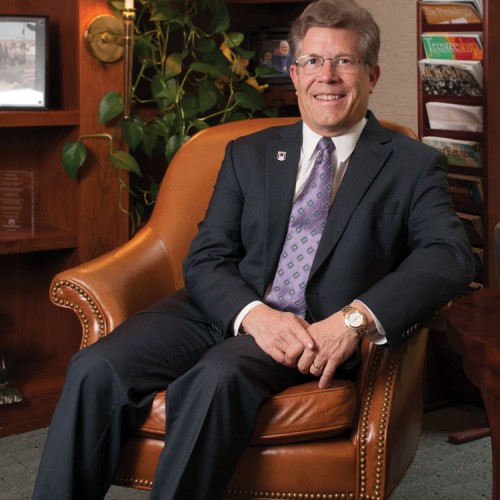
The first order of business was to instill stability and thwart impending closure. Pete sent Steve and three others from the executive team—Douglas Steeples, Craig Green, and Deborah Jenkins—to study the successful reorganization of the University of Charleston in West Virginia. The “Gang of Four,” as they were known, returned to campus with a bold plan of action to save the college: eliminate faculty tenure, terminate all positions and invite employees to reapply for available spots, consolidate seven academic divisions into four schools, and cancel athletic programming.
“It was a scary time. Jay Lees [beloved theatre professor] said, at the time, it was like being strapped to a deck chair on the Titanic,” Steve says. “The only thing that kept us going was youth and a very inspiring president who wouldn’t let us fail.”
But behind the scenes, Steve was working on a shutdown contingency that had the business community chomping at the bit. His office became a revolving door for condominium developers and education administrators interested in turning Westminster into a satellite campus for a state school. “The low point occurred when the Department of Corrections wanted to use the residence halls as a halfway house for inmates,” Steve sighs. “We rejected all those proposals, but the vultures were definitely hovering over the institution.”
Thankfully, the contingency plan was not needed. By the fall of 1983, enrollment stabilized and college operations were more streamlined, resulting in a string of significant gifts in the coming years that helped close Westminster’s darkest chapter. “We have a long history of struggle, but this was the critical moment,” Steve says. “We were so close to failure, but to watch us emerge is something I’ll never forget: it still runs within me.”
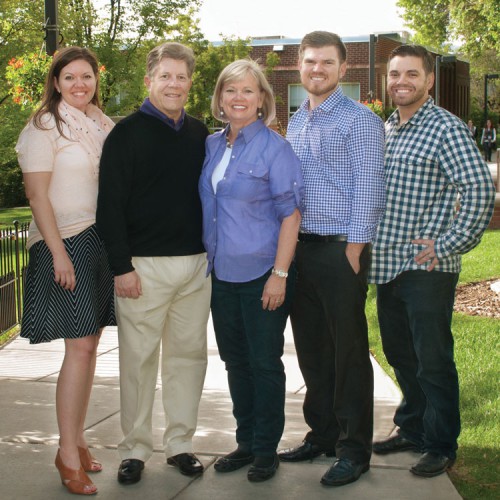
With those dark days behind the college, Steve witnessed firsthand the remarkable renaissance at Westminster during which academic programming flourished, the campus infrastructure transformed, and athletics made a long-awaited resurgence. He attributes the college’s success over the past three decades to the unique leadership attributes of presidents Charles Dick, Peggy Stock, Michael Bassis, and Brian Levin-Stankevich, whose administrations have collectively brought credibility, growth, innovation, and a strong sense of community to the institution.
“We have a proud legacy,” he says. “I’m in a unique role—having watched so much campus development over the past 34 years—to connect the past to the future.”
It was this deep, historical context that made Steve the natural choice to succeed President Levin-Stankevich. With several key leadership positions in transition, the college’s trustees appointed Steve to the role of president, knowing he would instill confidence in the community and advance the objectives outlined in the strategic plan. “This is an incredibly rare opportunity for me…The trustees wanted to have someone they knew would honor the institution and bring a lot of understanding and history,” he says. “I think that’s hard to do when you bring in someone from the outside.”
Former President Michael Bassis, who served from 2002 to 2012, believes the trustees
were wise in naming Steve to the presidency.
Bassis, who made the unorthodox decision to move Steve from the financial realm to
the role of vice president of advancement eight years ago, knows firsthand the unique
skill set Steve brings to the position. “No one has more in-depth knowledge of the
history, people, programs, strengths, and weaknesses at Westminster than Steve does,”
he says. “And no one cares more than Steve. You put those together, and that’s a power
combination.”
But Michael asserts Steve’s success as president depends on his ability to carve out time to analyze opportunities and threats for the college, a skill Michael honed during his administration. “It’s very easy to get caught up in the day-to-day work,” he says. “That’s important, but the most important job for him is to look over the horizon and then work with other people to develop the strategy to engage the future effectively.”
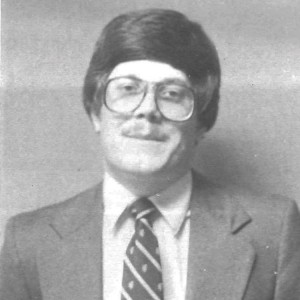
The response to Steve’s appointment has been overwhelmingly positive, assuring him that he has the backing of the community he now leads. “I was surprised to have so many faculty, donors, and alumni contact me,” Steve says. “It boosts my confidence to do this job, and it means a lot to me that they trust I won’t betray the core values of the institution.”
The people who have been behind Steve the whole way are his family: wife, Sandy; daughter, Amanda; and sons, Danny and Alex—all of whom are proud Westminster alumni. Steve and Sandy broke the news to their kids over Sunday dinner—news that was first met with surprise and then excitement, as they knew their dad would be a great fit for the job. “He’s such a hard worker, and he’s so capable,” says Amanda Morgan Bowerman (’02). “Everybody respects him because he’s so respectful of other people.”
For Steve, he’s gratified that his family, particularly Sandy, has embraced this new challenge so late in his career. “They have been very supportive, and they’re proud,” he says. “I spend an unbelievable amount of time at Westminster, and I’m fortunate that Sandy is able to spend a lot of that time with me.”
His hope for the future of Westminster is that it develops the resources to become the place where students from all backgrounds can enroll and thrive. “I have witnessed the power of education to change lives and communities,” he says. “But how do we make it accessible to everyone? My dream is that the college builds the financial resources to offer this kind of education to all people who truly want to come here.”
What Steve has learned from six presidents:
David Cornell
“I learned from David that you need to understand and appreciate the culture of a place before you can lead it.”
James “Pete” Petersen
“He inspired followership, and he refused to let us fail. He taught me courage, which helped a very young team have confidence.”
Charles Dick
“He was a real delegator. He brought academic respect to the institution and taught us the importance of stability and credibility.”
Peggy Stock
“Peggy dared us to be great. She could walk into any room and capture respect and attention. She commanded your attention, and from her, I learned to be bold and ask tough questions.”
Michael Bassis
“I learned about strategic, long-term thinking from Michael, and why it’s important to challenge conventional ideas.”
Brian Levin-Stankevich
“Brian taught me about connecting service to education. What he did in South Salt Lake was truly extraordinary, and it has added more meaning to our students’ learning.”
Sandy Morgan
“First Lady” was the last title Sandy Morgan ever thought she’d have at Westminster. But being a familiar face on campus for more than three decades—not to mention the fact that she earned a degree in 2011—Sandy has embraced this new role with energy, enthusiasm, and a deep passion for the college and its people. Meet Westminster’s first alumna first lady…
“Steve and I met the first day of high school. He would always open the door for me, and I thought that was really cute,” says Sandy Morgan.
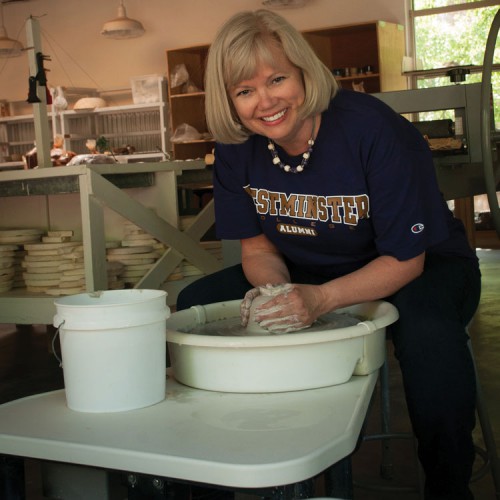
She remembers being very introverted as a child but credits an outgoing Steve with helping her to come out of her shell and embrace new challenges in life. She even tried out for—and made it onto—the Highland High School cheerleading squad after she learned that Steve and a friend were trying out. “Steve and I had been dating for a year, and I wasn’t about to let him go try out with all those other cute girls without doing so myself!” Thus began a partnership that has spanned more than 40 years—one that is defined by hard work and mutual support.
The Morgans were married in 1972, and Sandy worked as an executive secretary to help support Steve as he completed his CPA coursework. After Steve began working at Westminster as a business manager, Sandy enrolled to pursue her bachelor’s degree. “At the time we had two little kids, and my neighbor babysat for me. When I had my third child, I just couldn’t do it anymore,” she says.
But she didn’t give up on earning her degree. She attempted school two more times, but life circumstances demanded her attention. It wasn’t until she tried a third time, enrolling in Doug Wright’s “History of American Cinema” class in 2005, that she started to believe it was the right time to be at Westminster. “I’m a major movie buff, and I thought that if I was going to compete with students, this was a class where I could do it.”
Sandy came down from that high, however, when it was time to write academic papers. Her daughter, Amanda, served as her editor and would chastise her mom for being too wordy. Realizing she needed to take an English class, Sandy nearly had a panic attack when she walked into her English composition class in Converse Hall. “But then this young woman next to me said, ‘Hi, I’m Lexie. What’s your name?’ The students have always been so accepting here,” Sandy says. “She is the reason why I stayed.”
These college years were meaningful for Sandy. All of her family either worked or were attending classes at Westminster at the time, so they would often meet for lunch in Shaw to catch up. “At this time my parents were gone, and my kids were out of the house,” she says.
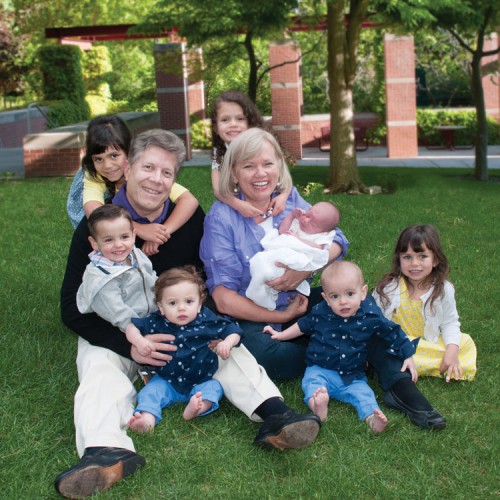
“Instead of staying home, I went where they were, and I was lucky I could do that and be involved with Steve’s work.”
Sandy graduated summa cum laude with a Bachelor of Fine Arts degree in 2011, boasting a 4.0 grade point average. Throughout her college career she was aware that many knew Steve was her husband, which motivated her to excel even more. “I’m proud of the fact that I worked really hard and earned that 4.0,” she says. “I worked harder because people knew who I was. But it was such a great learning experience, and I realized how important it was as an adult to keep learning.”
Although Steve is proud of all of his family’s accomplishments, he beams when reflecting on Sandy’s journey to her degree. “There was no shortcut for her, and she had to do it like any other student,” he says. “But she came with real enthusiasm, and it was a really proud moment for me when she graduated: it validated everything I believe about this place.”
Now as the college’s first lady, Sandy looks forward to spending much of her time interacting with and supporting students, and no one understands the student experience better than Sandy. “I’m very proud to be the first alumna first lady—it’s really weird!” she laughs. “But I feel like I relate to the students, and I definitely plan to be very accessible to them.”
Join us for President Morgan’s inauguration on Saturday, September 26, at 10:00 a.m.
The inauguration will be followed by brunch and a campus highlights tour from 11:00 a.m. to 2:00 p.m.
About the Westminster Review
The Westminster Review is Westminster University’s bi-annual alumni magazine that is distributed to alumni and community members. Each issue aims to keep alumni updated on campus current events and highlights the accomplishments of current students, professors, and Westminster alum.
GET THE REVIEW IN PRINT STAY IN TOUCH SUBMIT YOUR STORY IDEA READ MORE WESTMINSTER STORIES